7 things to know about moving to a London mews
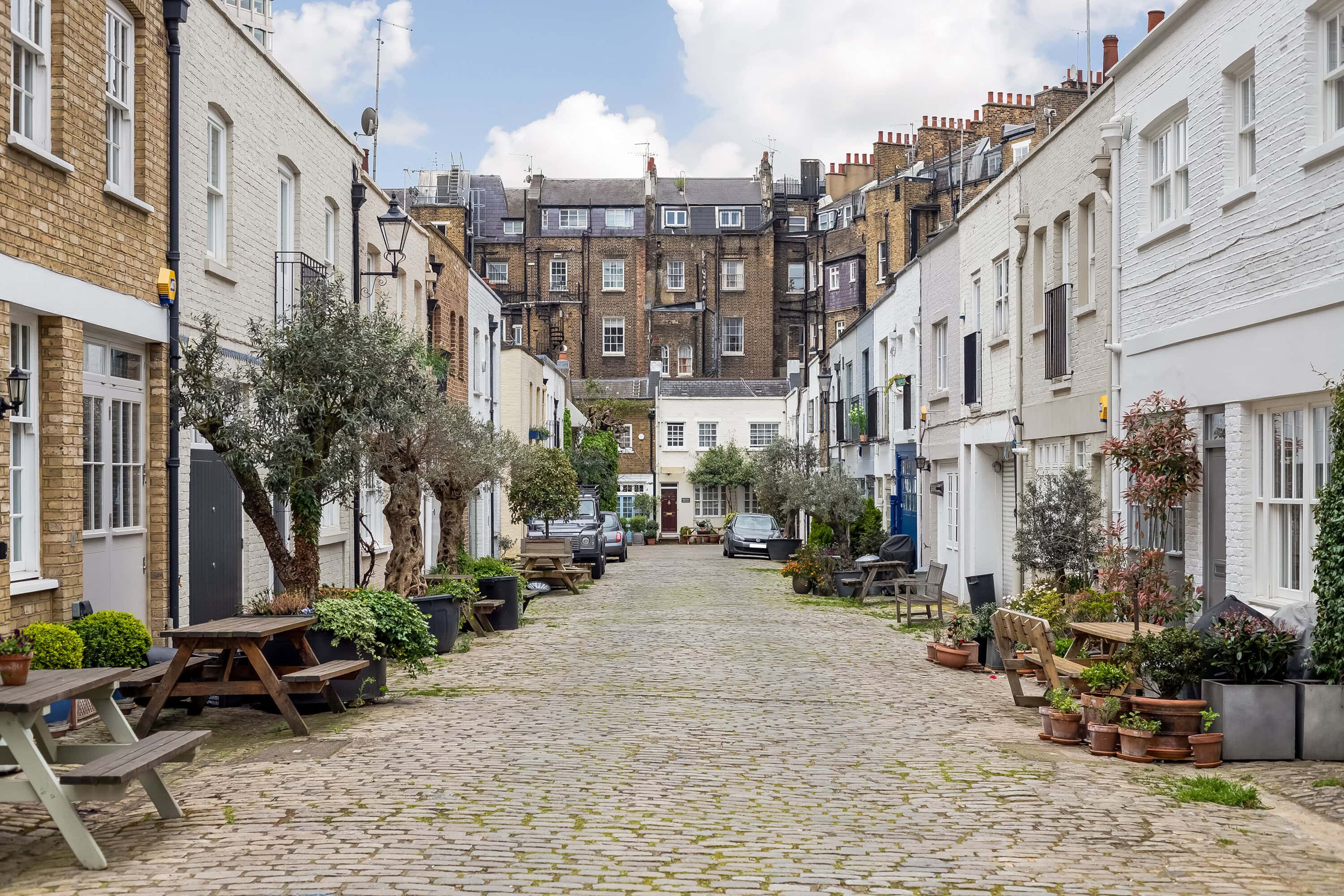
Where does the word ‘mews’ originate?
Originally, the word ‘mews’ comes from ‘muer’ – the 14th century French word meaning moulting or shedding. Long before mews houses became desirable homes for people, they were used as bird coops to provide shelter for birds of prey used for hunting during their moulting season, or to breed and fatten up poultry in preparation for the banqueting table. In the Middle Ages, the phrase ‘in meuwe’ first used in a 14th century romantic poem, was used to refer to a secret hiding place. Centuries on, the mews streets across London remain quiet, cobbled and concealed streets, discreetly situated away from the busy noisy thoroughfares of the capital.

What is the history behind the London mews?
In 1534, a fire at King Henry VIII’s royal stables at Bloomsbury, made him relocate the royal horses to the former hawk mews at Charing Cross. This site, today home to the National Gallery, was then rebuilt for the king’s horses as permanent stabling, whilst retaining the ‘mews’ name previously associated to the falcons kept there. As the development of 18th century London extended across fields and meadows, Georgian builders and planners set about designing grand houses for wealthy residents. And so, these once rural acres were transformed into the smart neighbourhoods (as we know them today) of Belgravia, Chelsea, Kensington, Mayfair and Marylebone.
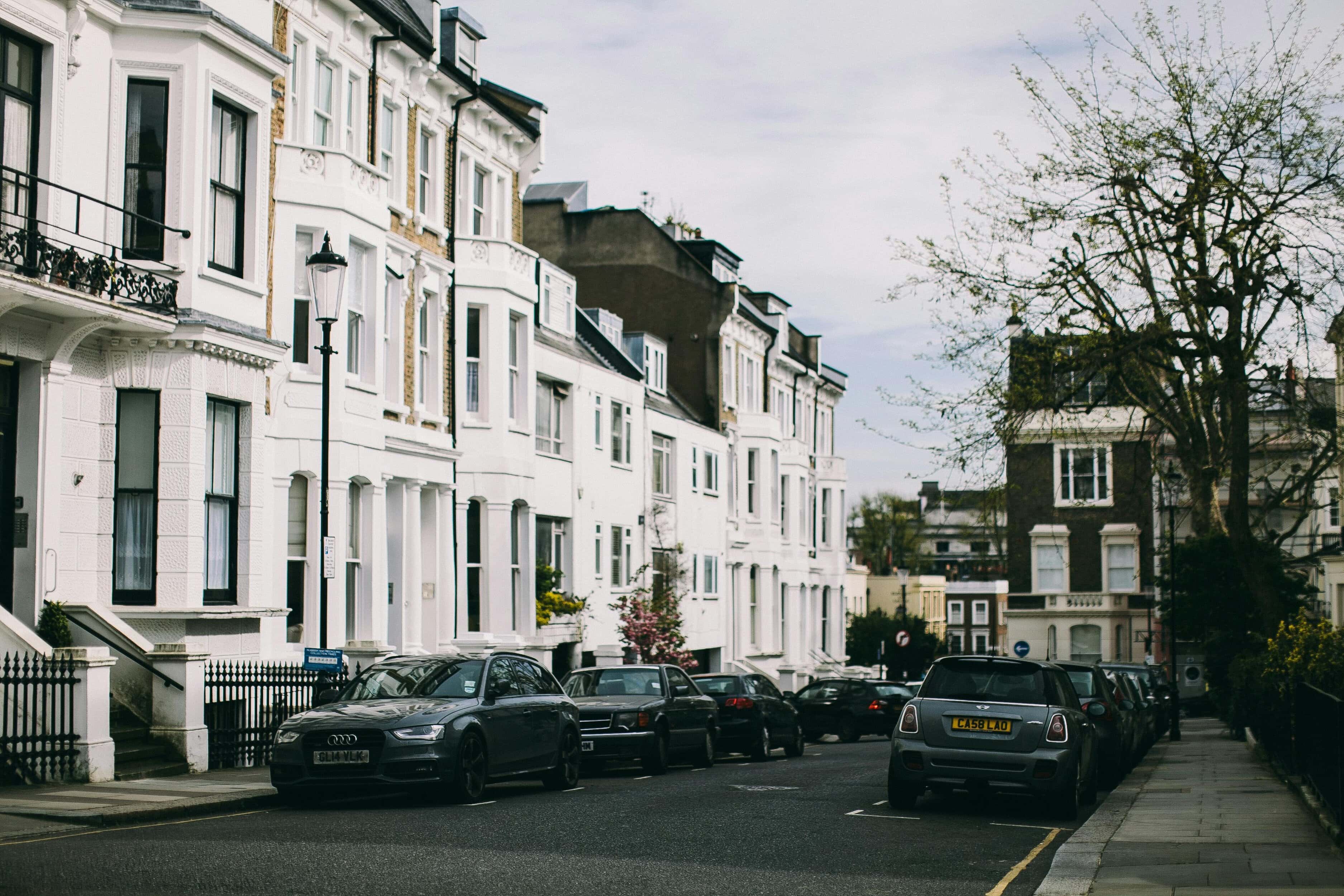
The new incoming affluent occupants came with an entourage of staff. Architects and planners needed to create neat rows of humble buildings tucked behind the large residences, which were easily accessible to provide equestrian accommodation for the horses, carriages, coaches and separate living quarters for grooms and coachmen above.

By the start of the 20th century, the emergence of the motor car meant a decline in the use of the horse and carriage and the staff who had looked after them. Gradually, the mews houses lost their equine heritage and were sold off to businesses such as printers, garages and taxi firms. The cobbled streets became rather down-at-heel – a far cry from the stylishly elegant destinations they are today.
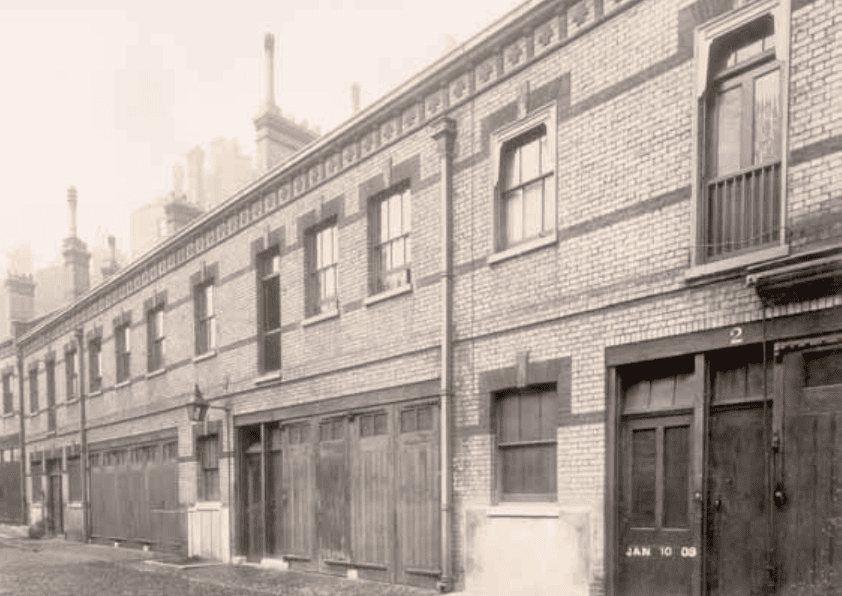
During World War II, some mews experienced significant bombing that destroyed some original buildings and despite refurbishment, mews had a reputation for being a little ‘scruffy’ in the 1960s. Filmmakers chose to shoot black and white films in mews locations because they brought a certain ‘edginess’ suited to ‘gangster-style’ characters.
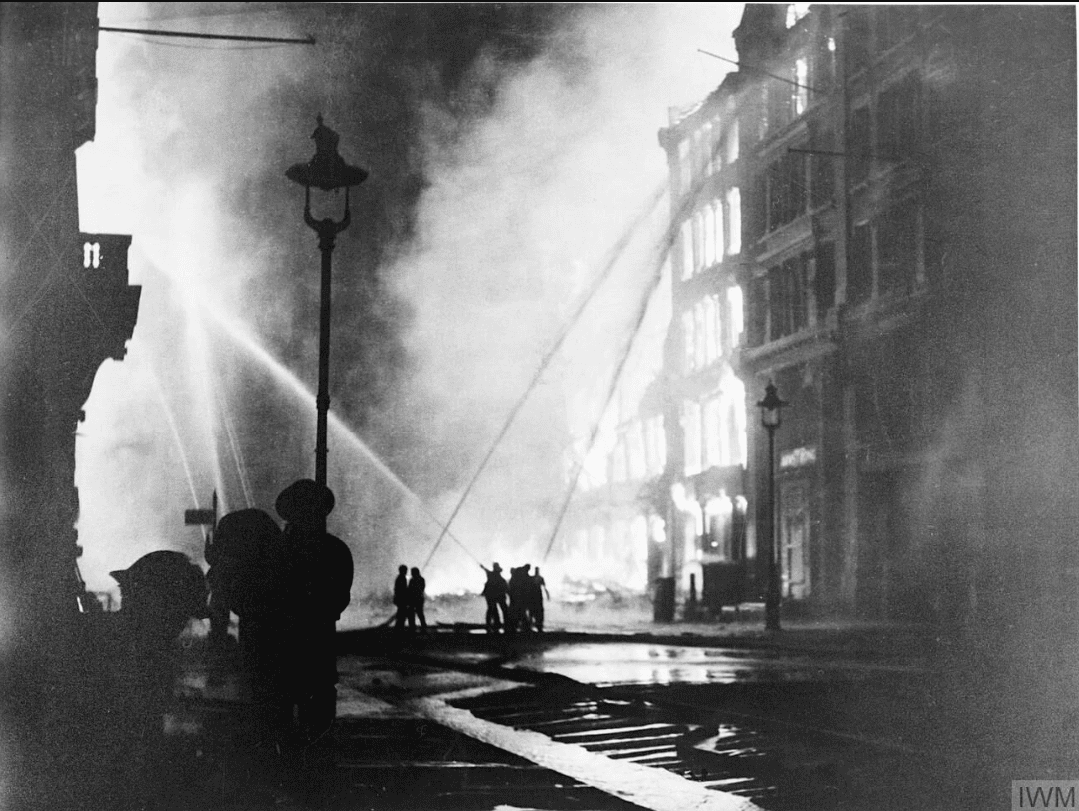
At the same time however, creative types – artists, musicians and actors began to discover the appeal and potential of these discreet, concealed streets that were within easy reach of the buzz of central London, but held a certain bohemian charm – such as mews around Portobello Road in Notting Hill, far removed from the traditional smart London townhouses that were where the rich and famous were ‘expected’ to live.

The shift in mews’ popularity and desirability gradually continued and was definitely slow, but by the 1980s, the mews had acquired a new status and a new identity within the prime property rankings. As more people began viewing these properties in a different way – seeing the scope and potential to reconfigure spaces, extend accommodation, create basements, and add roof terraces, so demand began to increase and in turn property values.
How many mews are there in Prime Central London?
The London Mews Directory was curated by Lurot Brand and as of 2025, estimates that there are over 400 mews streets across London.

The founders of Lurot Brand, Antoine Lurot and his wife Kati, set up the first specialist mews estate agency in London in 1971. Antoine made it his personal mission to dash around central London on a motorbike recording and photographing as many mews as he could find – back then he recorded as many as he could find.

Where are some of the most desirable mews in central London?
You can find gorgeous mews everywhere across Prime Central London from Belgravia to Bayswater and Maida Vale to Mayfair, but South Kensington and Hyde Park, Notting Hill and Marylebone are home to some of the most well-known and traditional mews. Here are some of our favourites:
Kynance Mews, South Kensington SW7: Has a reputation as one of most beautiful mews in London; approached via Grade II listed arches and full of attractive mews houses with various plants and flowers in window boxes or placed outside their front doors. Properties are adorned with wisteria in May and displays of seasonal climbers and decorative planters flourish throughout the year.

Bathurst Mews, Hyde Park W2: Located in the Hyde Park Estate, this charming mews evokes the feeling of yesteryear. It is the last remaining mews to be home to two riding schools – a reminder of its equine past as the clip-clop of horse’s hooves resonate on the cobbles throughout the day going for a hack in Hyde Park.

Stanhope Mews South, South Kensington SW7: An impressive cobbled cul-de-sac comprising 23 mews properties. This mews is a fine example of classic mews architecture with well-preserved historic features.
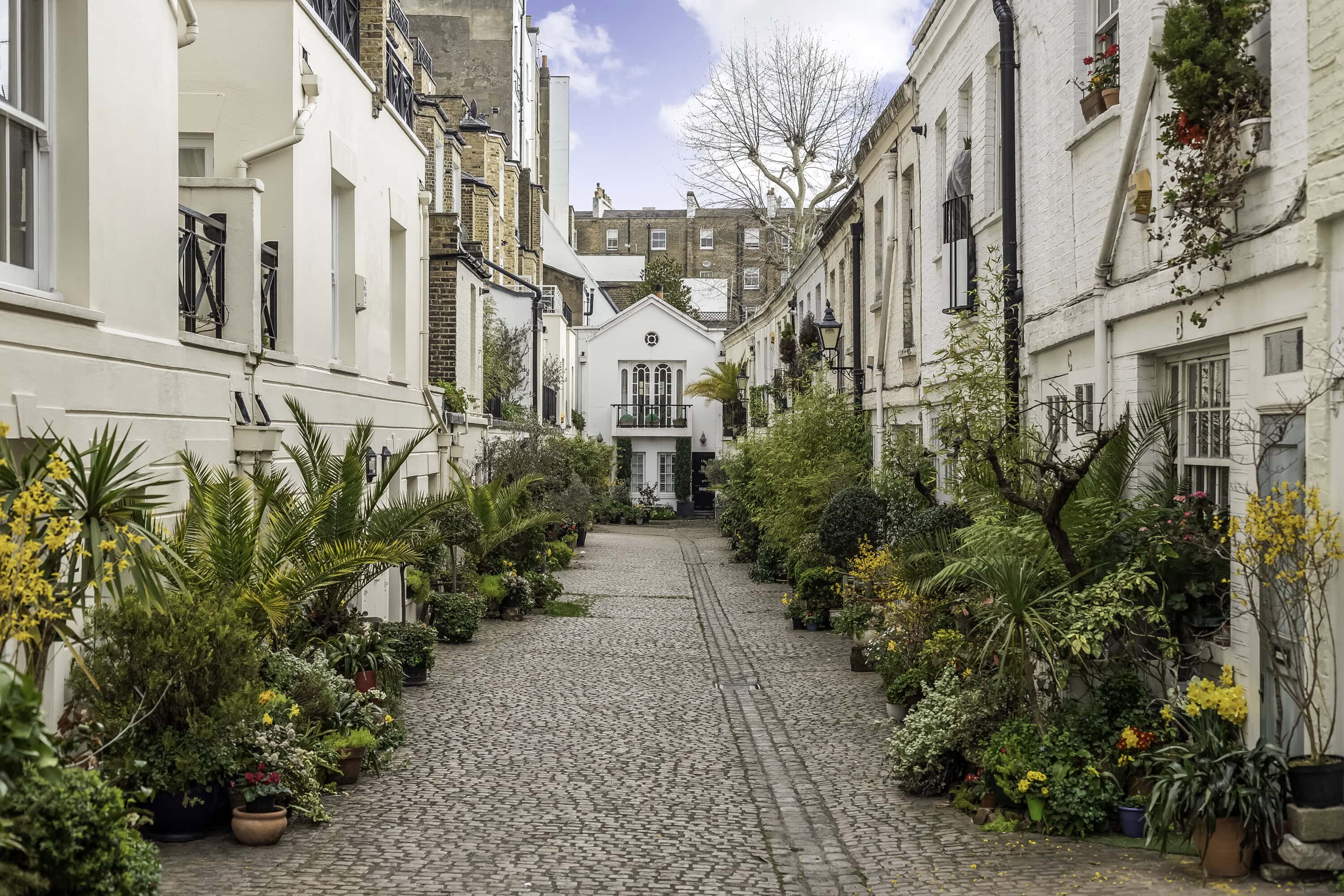
Kendrick Mews, South Kensington SW7: Situated just off the Old Brompton Road, this quiet mews is something of a local landmark. The wall of the last house displays a large hand-painted mural depicting a ski scene which was commissioned by the ski operator, Erna Low, to celebrate their founder and namesake, who started the first ski travel company in the 1930s when she arrived in London from Austria. Reece Mews runs parallel to Kendrick Mews and at Number 7, you will spot a blue plaque to commemorate Francis Bacon, the celebrated artist, who lived and worked in the property from 1961 to 1992.

Addison Place, Holland Park W11 : The Royal Borough of Kensington and Chelsea is bursting with pretty mews. Addison Place lies within the Norland Conservation Area – a secluded crescent made up of mews houses and cottages in the heart of Holland Park. The street is named after writer and politician, Joseph Addison (1672-1719), who co-founded The Spectator with his friend Richard Steele. Today this hidden-away mews street is considered to offer the lifestyle and cultural heritage in one of the most sought-after neighbourhoods in West London.
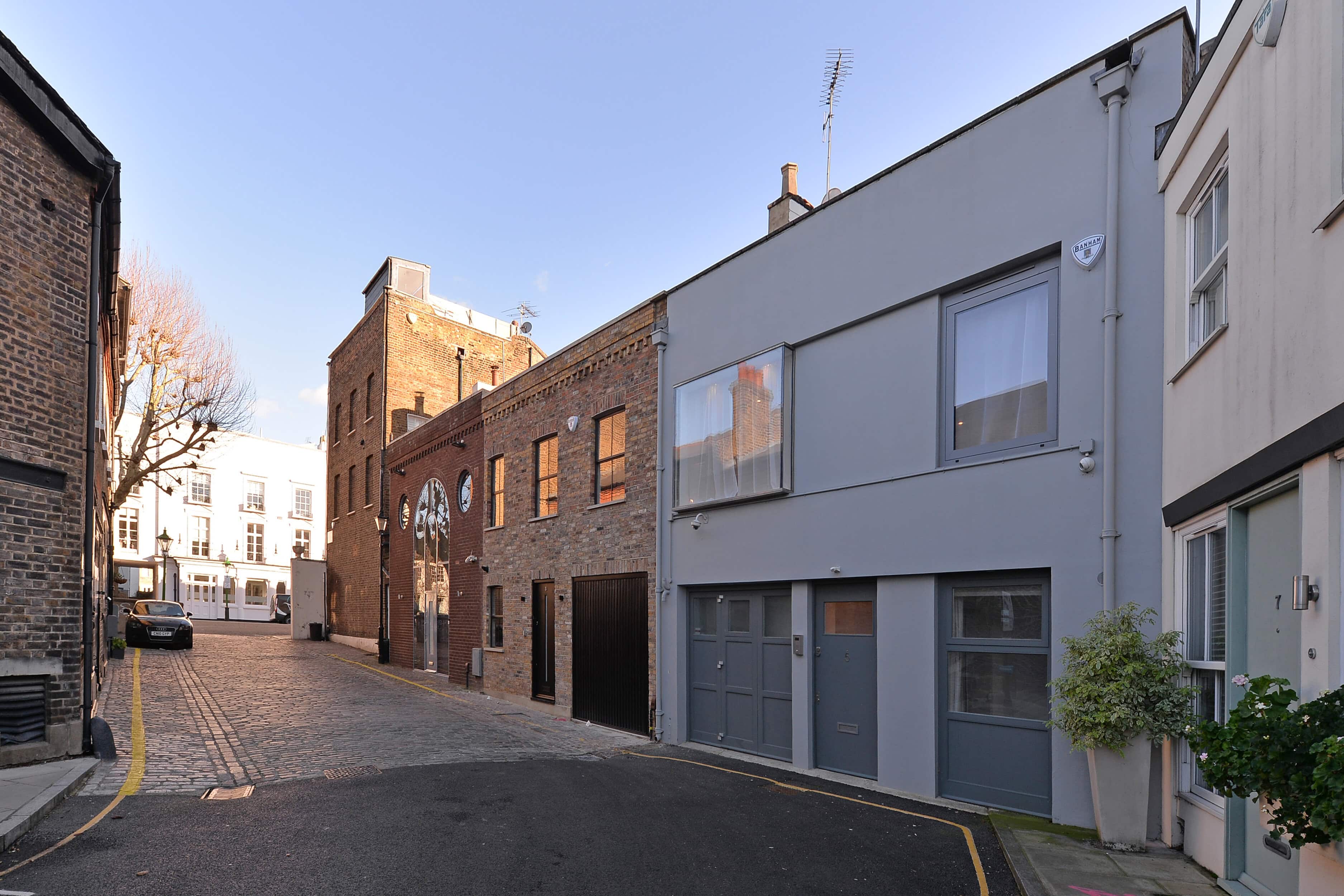
Bentinck Mews, Marylebone Village W1: Who could imagine that lively Regent’s Street is less than a 10-minute walk away, whilst the green open space of Regent’s Park lies in the opposite direction only 15 minutes away. This tiny cobbled no-through mews made up of eight period properties comes under Westminster City Council’s Harley Street Conservation Area; it leads off Marylebone Lane in the vibrant neighbourhood of Marylebone Village. The mews feels particularly quaint and secret, yet a few steps in any direction, leads to wonderful independent boutiques, tempting delis and an array of coffee shops.

Wimpole Mews, Marylebone W1: West of Marylebone High Street is another fabulously located mews – if you love to be immersed in café culture and the covetable vibe that Marylebone exudes from its designer shopfronts, pavement cafés and cocktail bars. Many remember the name of Wimpole Mews because of its association to the ‘Profumo Affair’ in 1962. A young model and showgirl, Christine Keeler, lived at Number 17. Her jealous ex-lover Johnny Edgecombe fired six shots into her front door with a handgun she had given him, having discovered that she was involved in relationships with Britain’s Secretary of State for War John Profumo and a Soviet Embassy attaché Yevgeny Ivanov. This resulted in a major scandal that ended Profumo’s political career and subsequently brought down the conservative government.
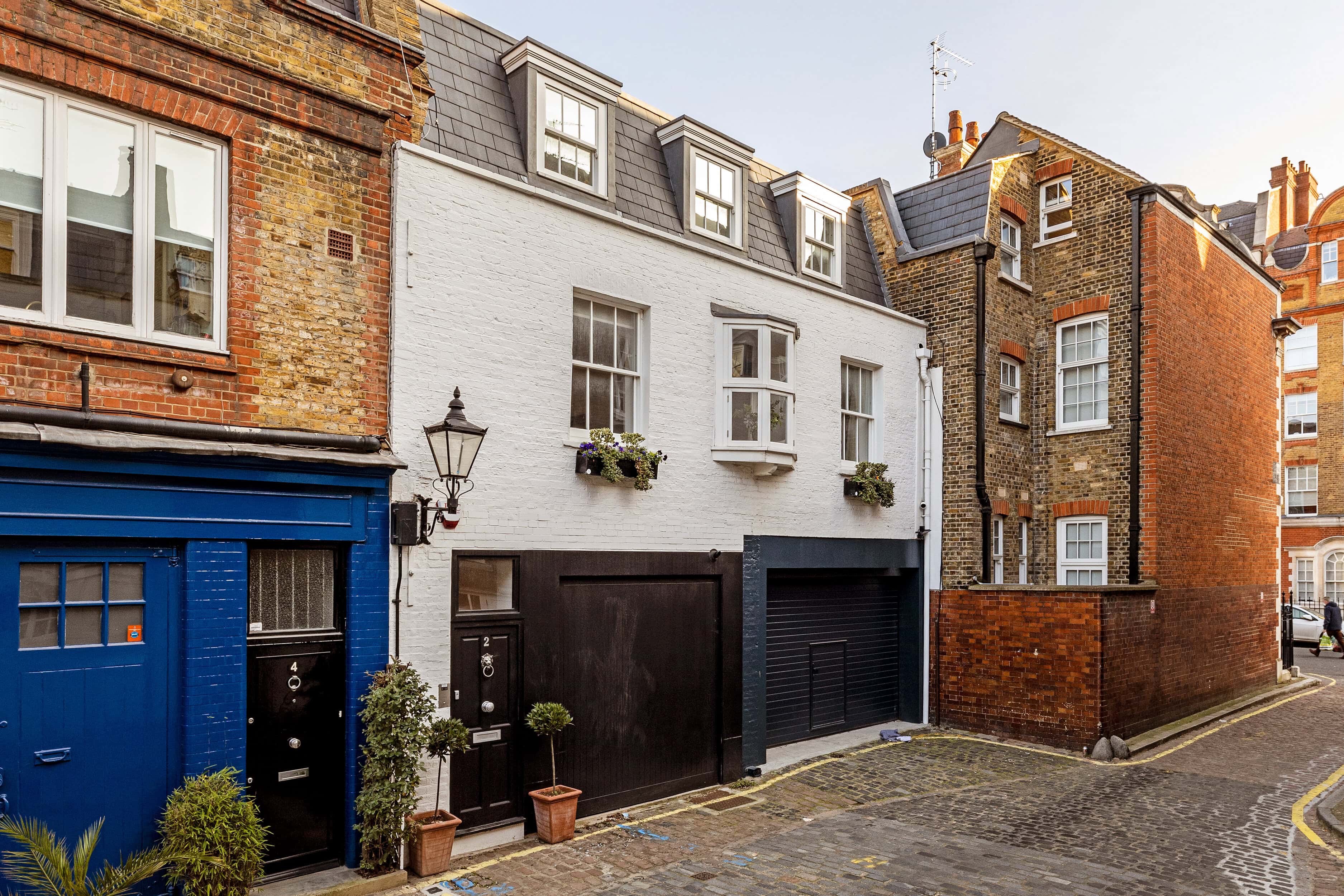
Eaton Mews North, Belgravia SW1: Another prestigious address in a prime postcode, this elegant peaceful mews has private residents’ parking in front of the properties. Access into the mews is via two entrances – one off Eaton Place and the other off Lyall Street and the amenities, shops, restaurants and bars in Sloane Square are only a short stroll away.

Will I have famous people as neighbours in my mews?
Potentially. The lineage of well-known mews residents is both eclectic and impressive, ranging from rock-stars – Ringo Starr and Noel Gallagher, singers Judy Garland, Madonna and Adele; film directors – Sir David Putman and Guy Ritchie, actors Burt Reynolds, Ian Holm and Sir Michael Caine, racing driver James Hunt, and modern-day celebrities, David and Victoria Beckham.
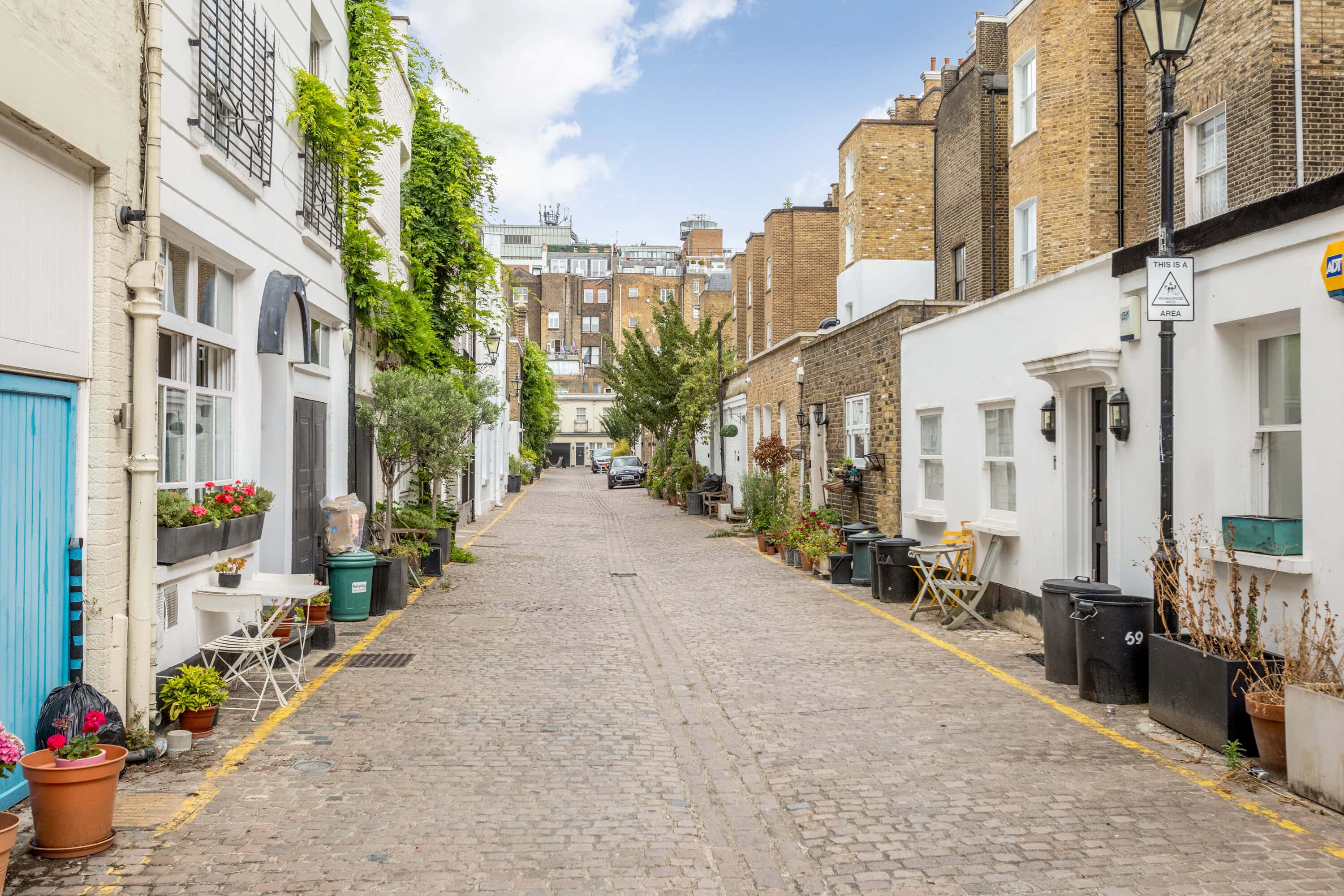
Artists have found sanctuary and creative inspiration living in a mews – the aforementioned Francis Bacon who painted some of his greatest works in Reece Mews by day and then sloped off to drink in Soho at night, The Viennese-born potter and ceramicist, Dame Lucy Rie, lived a happy and productive life at Number 18, Albion Mews in Paddington from 1939 until her death in 1995.
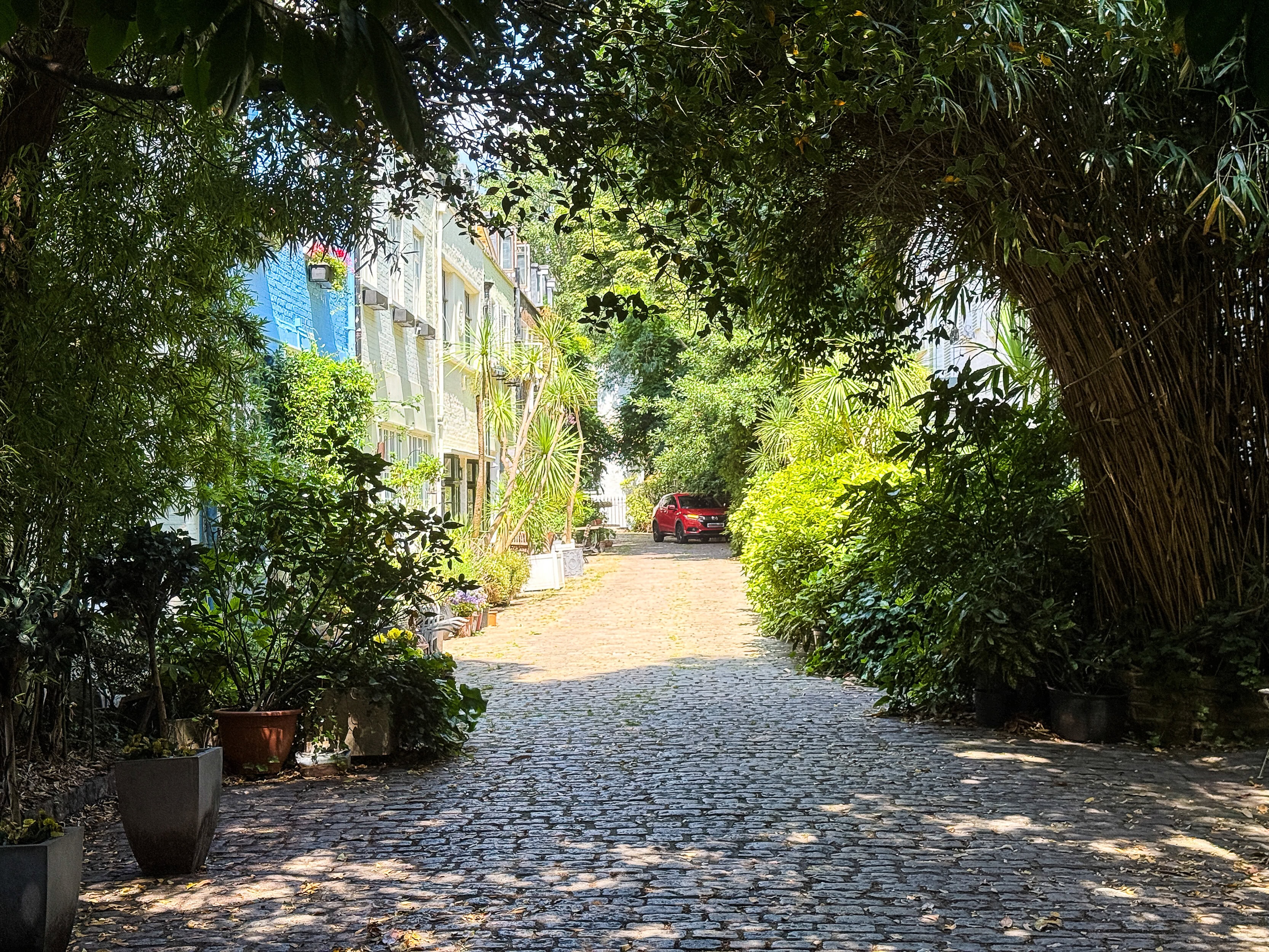
Prolific crime writer, Agatha Christie purchased her Chelsea home in The Boltons at Number 18 Cresswell Place in 1928 after her divorce, using the proceeds of her divorce to invest in the refurbishment of this mews house and never sold it. During her years of living there with her young daughter and Charlotte Fisher her secretary/governess, she used the mews as material for her short story, ‘Murder in the Mews’.
Will my mews end up in a film?
It’s a possibility.
Mews streets started being used as film locations back in the 1960s and you can still see the cameras rolling in them to this day. Below we list a few notable films and the mews street certain scenes were filmed in.
In Notting Hill, Number 18 Denbigh Close, a mews house just outside the Portobello Road Market provided the backdrop for ‘The Italian Job’ in which Michael Caine starred. Caine himself even went on to own and live in several mews houses.
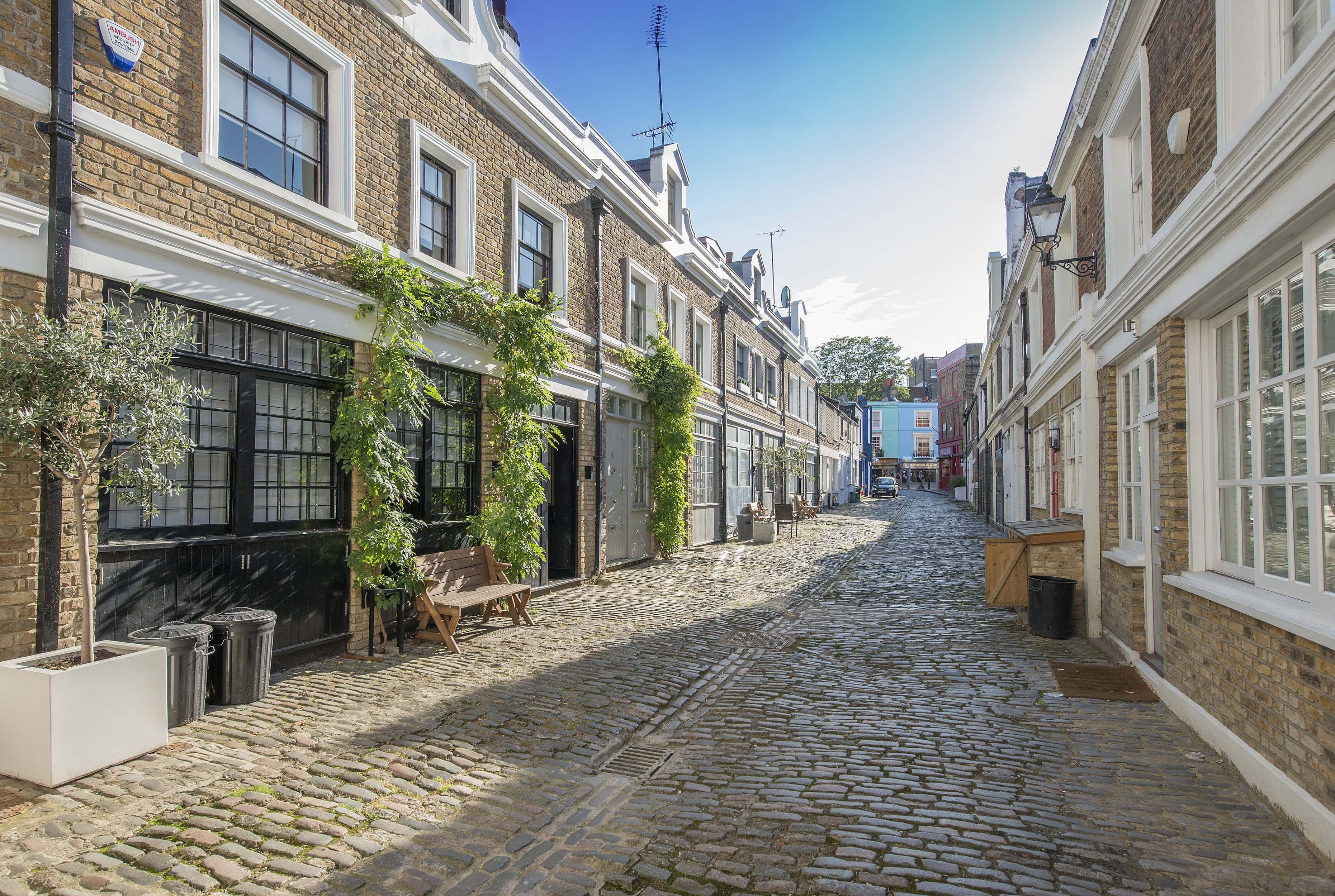
A short distance away is the picture-perfect St Luke’s Mews, which featured in the 2003 hit film, ‘Love Actually’, specifically the pink house at Number 27 where actor Andrew Lincoln confessed his love for Julie, played by Keira Knightley. Since then, visitors, tourists and movie buffs make a pilgrimage to take photographs of this gorgeous and famous mews.

In 1989, the film ‘Scandal’ was released, documenting the story of a political scandal involving Christine Keeler and the politician, John Profumo and Wimpole Mews, where Keeler lived, was featured throughout.

An end mews house in Stanhope Mews South appeared in the film ‘Kingsman: The Secret Service’. It was used as the main character, Harry Hart’s house, played by Colin Firth.

Queen’s Gate Mews has been a popular pick for films – ‘Performance’ in 1970 and in 2008, Jason Statham filmed ‘The Bank Job’ in the mews. Film director, Guy Ritchie shot ‘Layer Cake’ (2004) starring Daniel Craig and also owned a mews home here when married to Madonna.

Incidentally, renowned film director, David Putnam used to live and work at 13-15 Queen’s Gate Place Mews in South Kensington for over 30 years; it was the headquarters for his Enigma Productions company, and he was given the title Baron Puttnam of Queensgate.
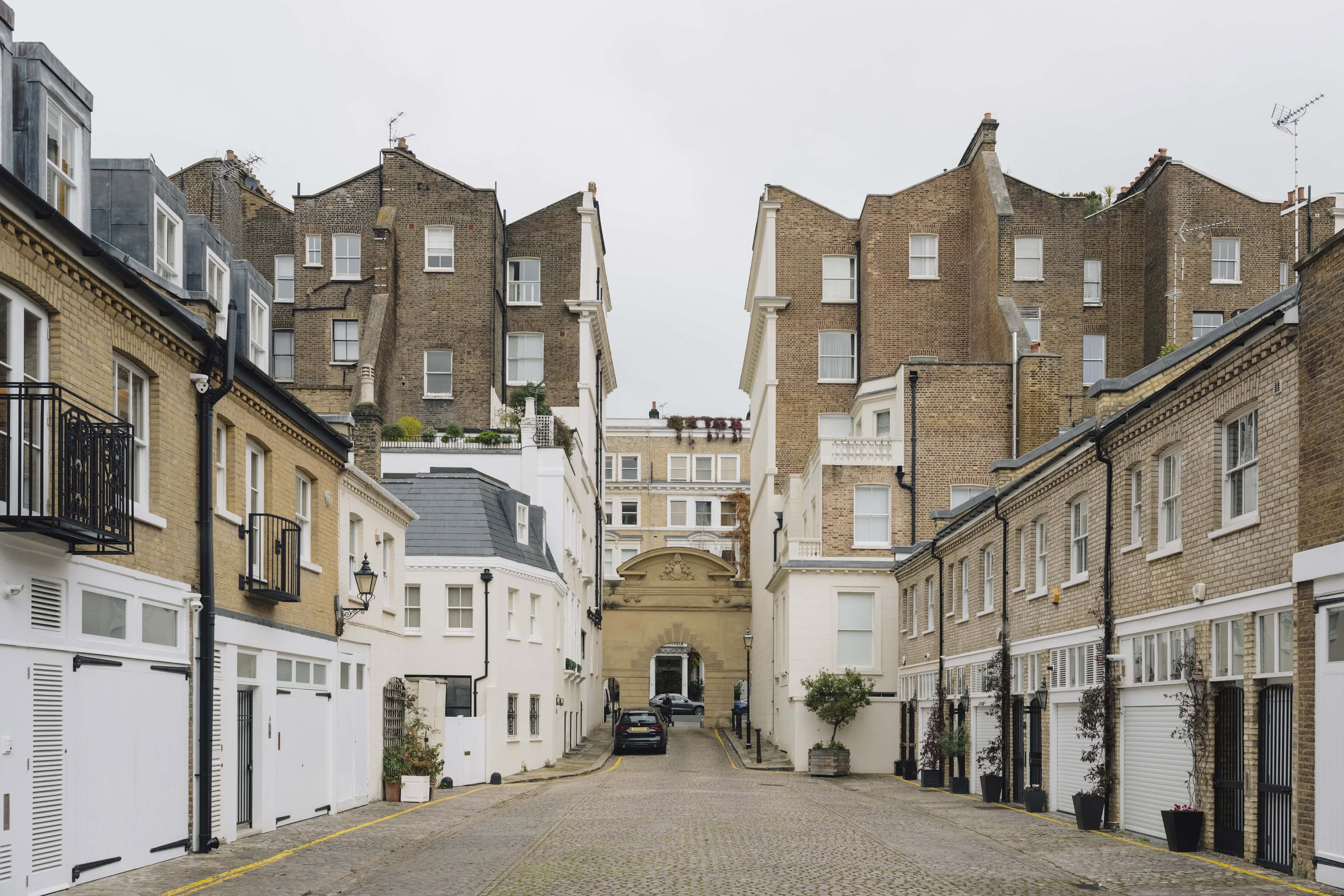
The benefits of mews living
If you are interested in buying or renting a mews property, it’s helpful to understand the things that make them unique when it comes to an English property ‘genre’. In fact, their unique, individual style is key to their timeless presence and classic appeal, as is the fact that they occupy some of the most impressive areas within Prime Central London. There’s no escaping the fact, that living or working (or both) in a mews is a special experience. Years ago, it was common to have stables in the mews, but today having a garage, or a private parking space in central London is a rare, distinct benefit adding another ‘convenience’ to mews living.

The majority of mews are now within designated Conservation Areas, meaning planning permission and development are restricted to preserve the heritage and appearance of the mews. Living in a mews feels like a crossover between living in a village community whilst having convenient access to everything city life has.

The location and arrangement of mews also provide enhanced security and privacy to the residents – a major benefit living in a metropolis. The fact that most mews are sold with a freehold tenure gives homeowners peace of mind knowing they own a property in perpetuity without the added expense of expensive service charges. These small simple buildings allow considerable scope for development resulting in modern-day architectural gems.
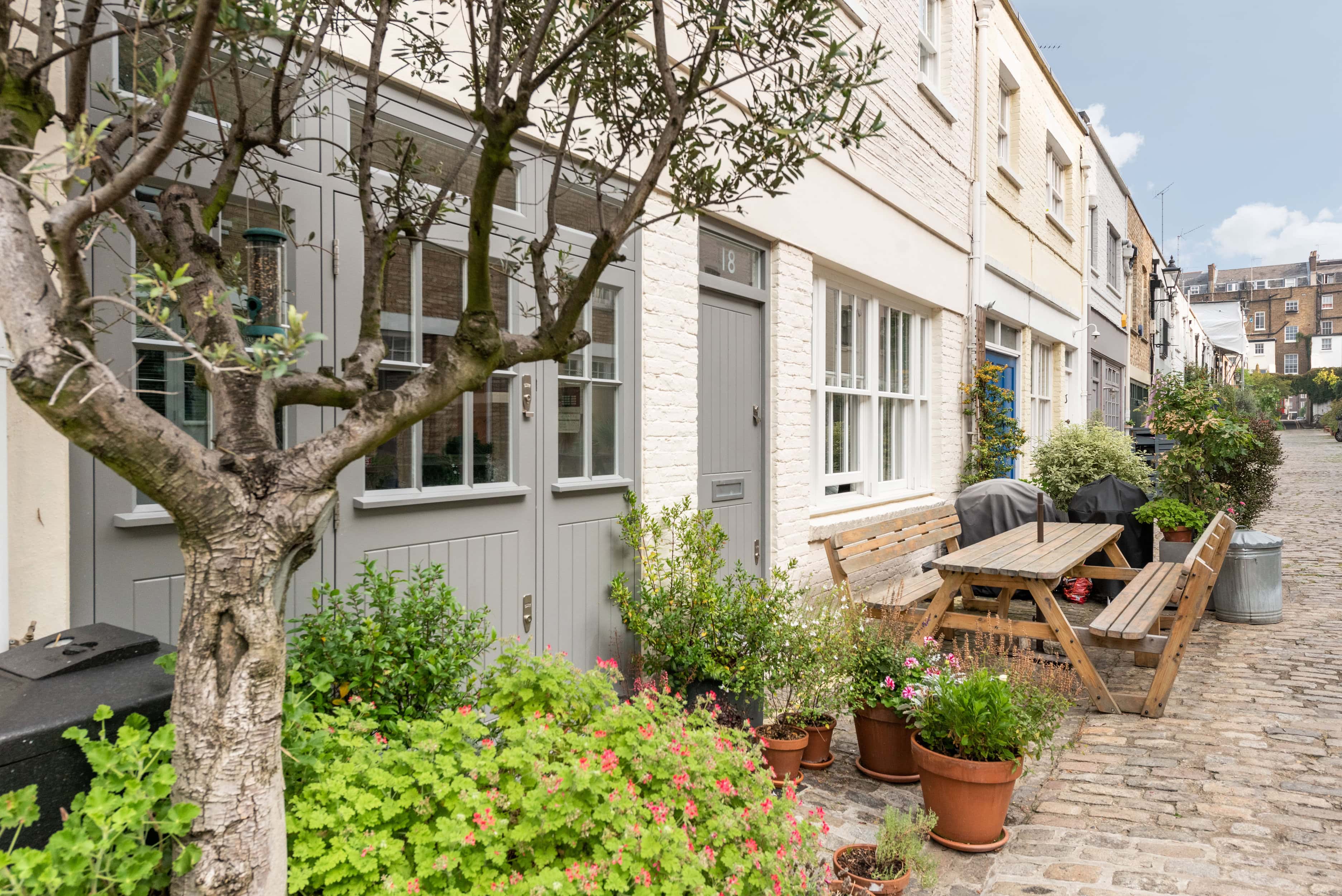
Today, mews offer the opportunity to live in a prime central postcode, to benefit from excellent connectivity across London, live within walking distance of some of the best amenities, green spaces, local pubs, schools, landmarks and architecture that London has to offer. Most of all, residents thrive in these friendly neighbourhoods, enjoying the community spirit, social interaction and inclusivity that comes from living in a mews.
